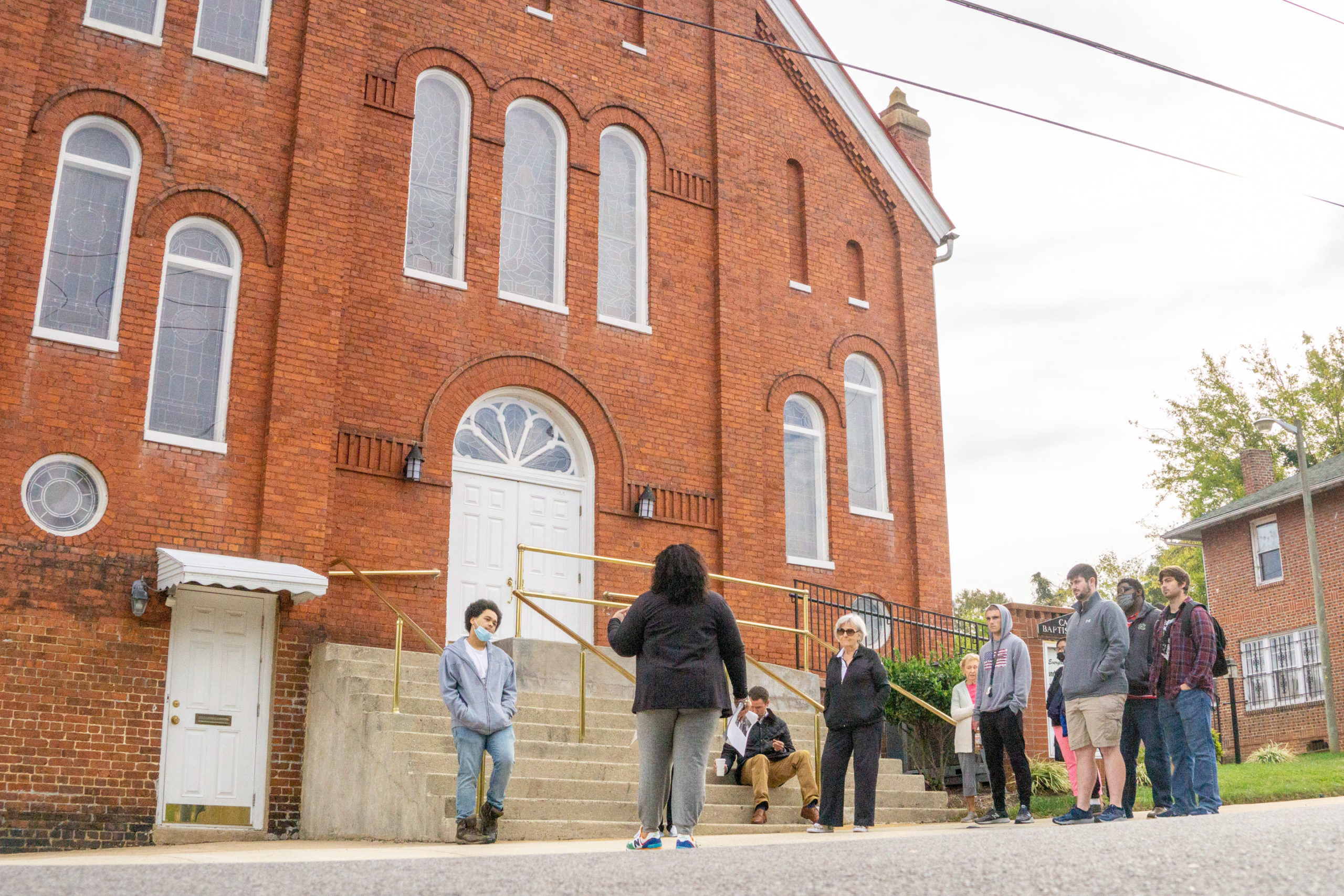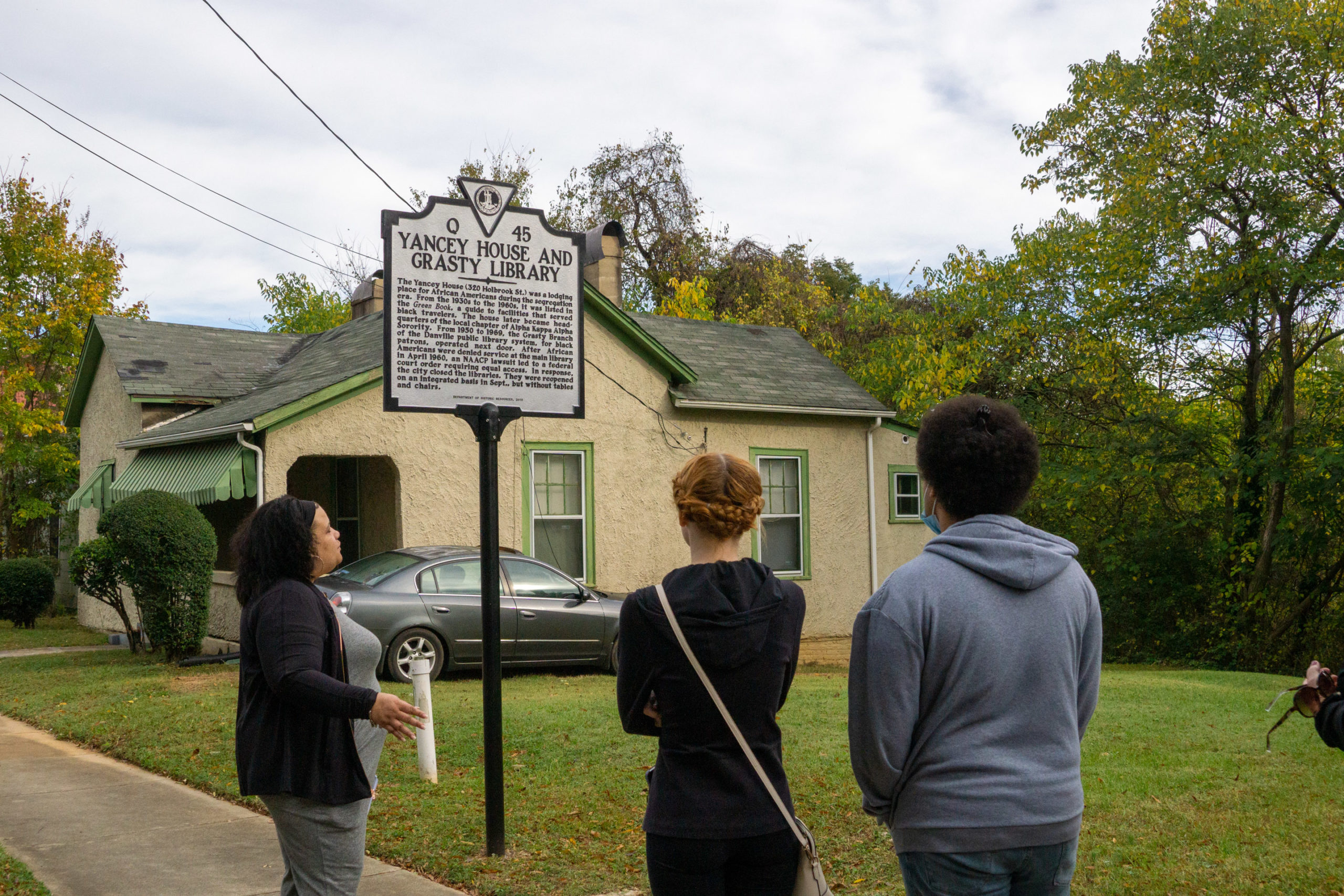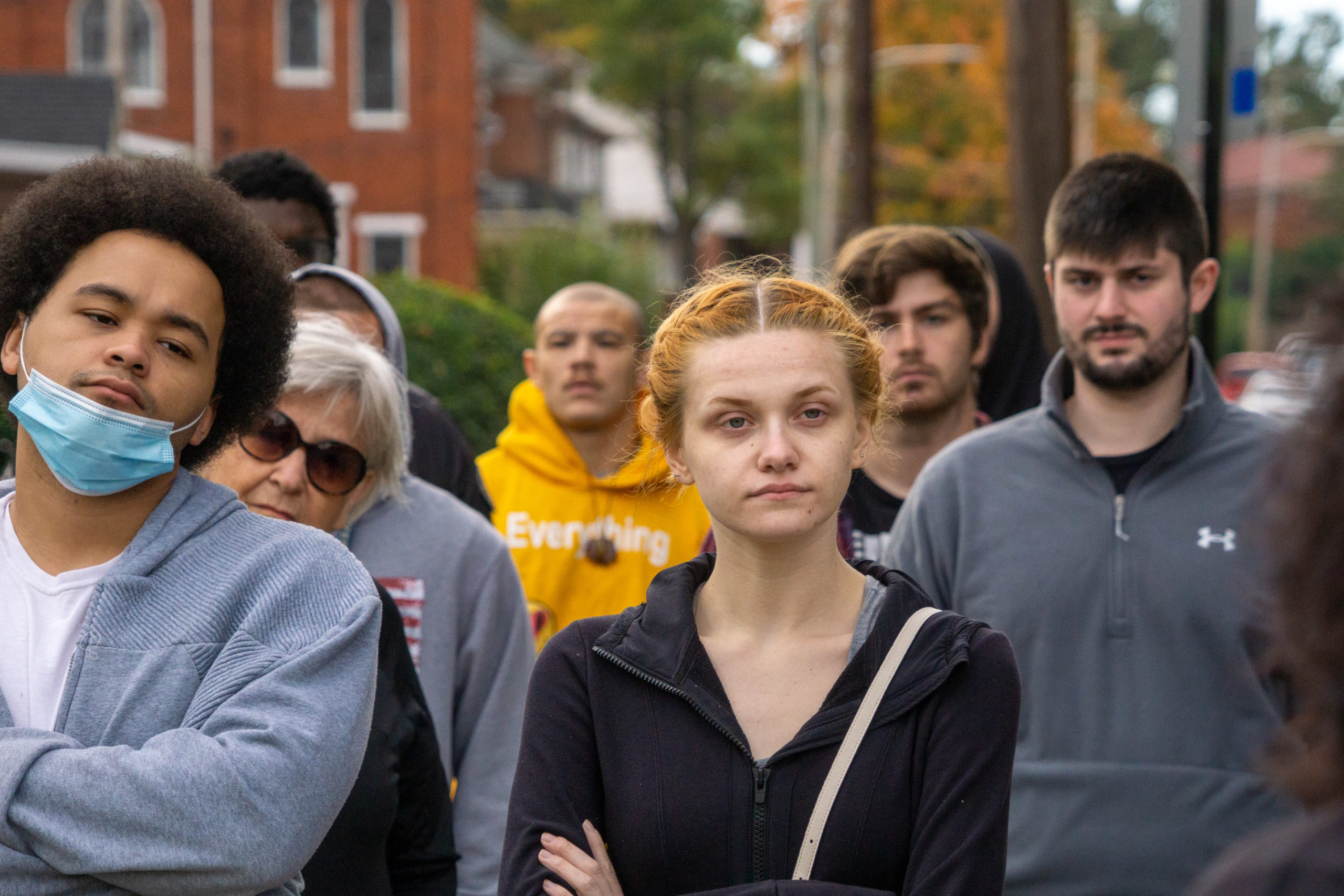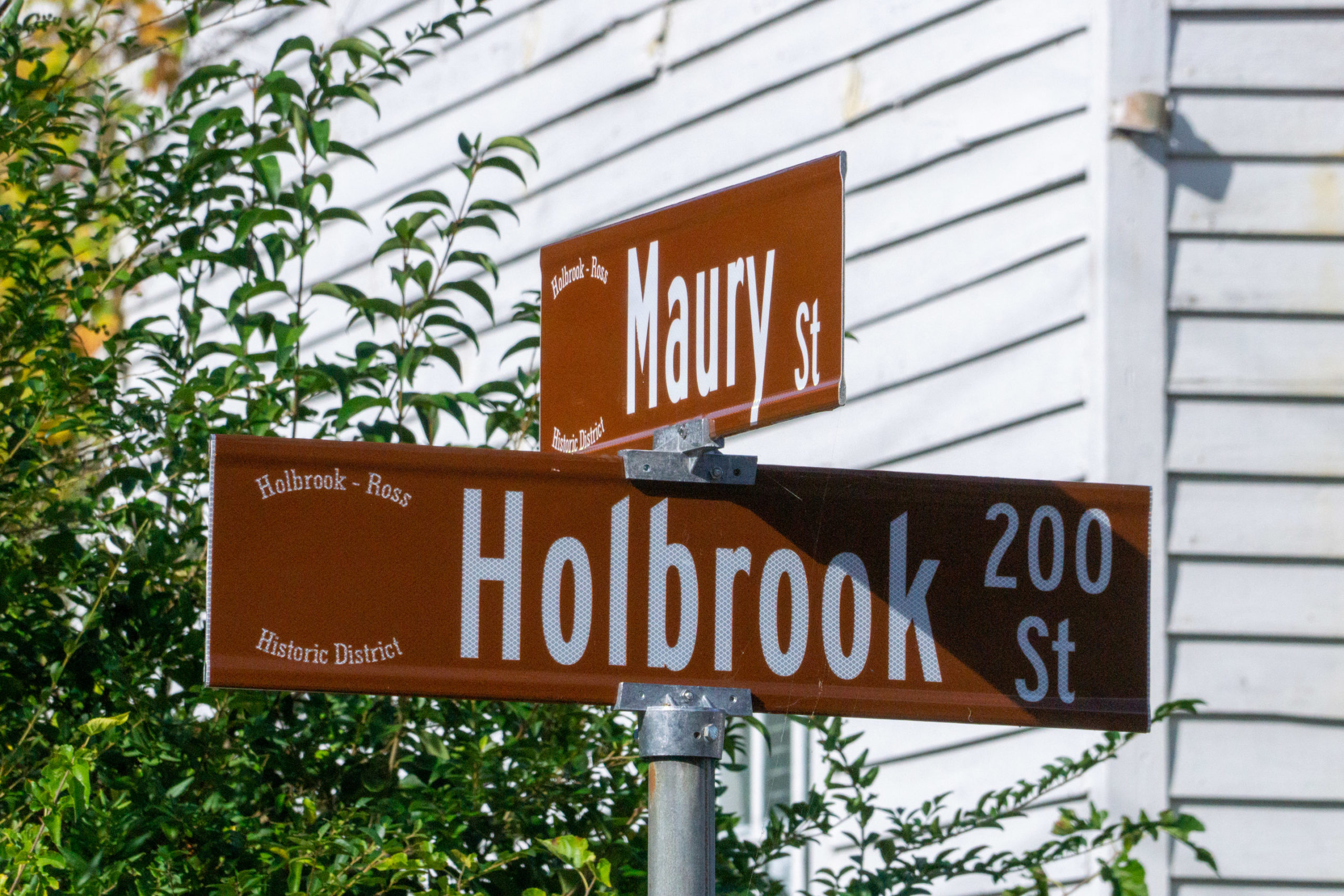Students taking a history course in American history from 1865 to 1917 were treated to a tour of Danville’s historic Holbrook-Ross neighborhood Thursday, Oct. 28.
 Dr. Andrew Canady said the neighborhood tour tied in segregation and the growth of the African American community in Danville.
Dr. Andrew Canady said the neighborhood tour tied in segregation and the growth of the African American community in Danville.
“I hope students on the tour take away that there was a thriving Black middle class in the late 1800s, that even here in the city where Averett is, that was true. There were doctors and lawyers, and that is important to understand the punitive of Jim Crow,” said Canady, associate professor of history and honors program director.
The tour was led by Karice Luck-Brimmer with Our History Matters, who shared stories and information about many of Danville’s most prominent Black leaders and businessmen.
 “I want the students to walk away with a greater appreciation for African American life and culture. I also hope that the students were able to see how important of a role Danville played during the civil rights movement and how everything that happened here tied into the national narrative,” Luck-Brimmer said.
“I want the students to walk away with a greater appreciation for African American life and culture. I also hope that the students were able to see how important of a role Danville played during the civil rights movement and how everything that happened here tied into the national narrative,” Luck-Brimmer said.
Nestled in the heart of one of Danville’s oldest sections in the city, the Holbrook-Ross neighborhood begins on Holbrook Street, which is directly across from Holbrook Avenue. Danville’s Main Street splits the two. It was established in the late 1800s.
At one time, the neighborhood boasted three churches, its own grocery store, a restaurant, hotel, library, mini golf course, two funeral homes and dozens of homes. Some of the locations in the neighborhood were featured in The Negro Motorist Green Book, a publication that listed locations that accepted Black customers.
 Luck-Brimmer noted her favorite part of the Holbrook-Ross tour is the narrative on Clarence 13X and how his movement influenced an entire generation of hip hop.
Luck-Brimmer noted her favorite part of the Holbrook-Ross tour is the narrative on Clarence 13X and how his movement influenced an entire generation of hip hop.
Averett Junior Nyjal Ehirim, a history education major, said he enjoyed the tour of the neighborhood and learning more about his hometown.
Along the tour, Ehirim and his classmates learned that certain services like segregated hospitals were relegated to the Black neighborhoods.
“Those types of services just weren’t available like they were for the whites, who probably had more advanced services,” Ehirim said.
 Being able to walk through the neighborhood and hear descriptions of what many prominent Black figures did during their lives in Danville connected together what Ehirim said they were learning about segregation and the Jim Crow era of American history.
Being able to walk through the neighborhood and hear descriptions of what many prominent Black figures did during their lives in Danville connected together what Ehirim said they were learning about segregation and the Jim Crow era of American history.
Additionally, Ehirim said while he knew about the neighborhood and some of the history, it was helpful to connect the stories to where people actually lived, worshipped and conducted business.
Students during the semester also toured the Danville Museum of Fine Arts and History, as the course also looks at reconstruction after the Civil War.
